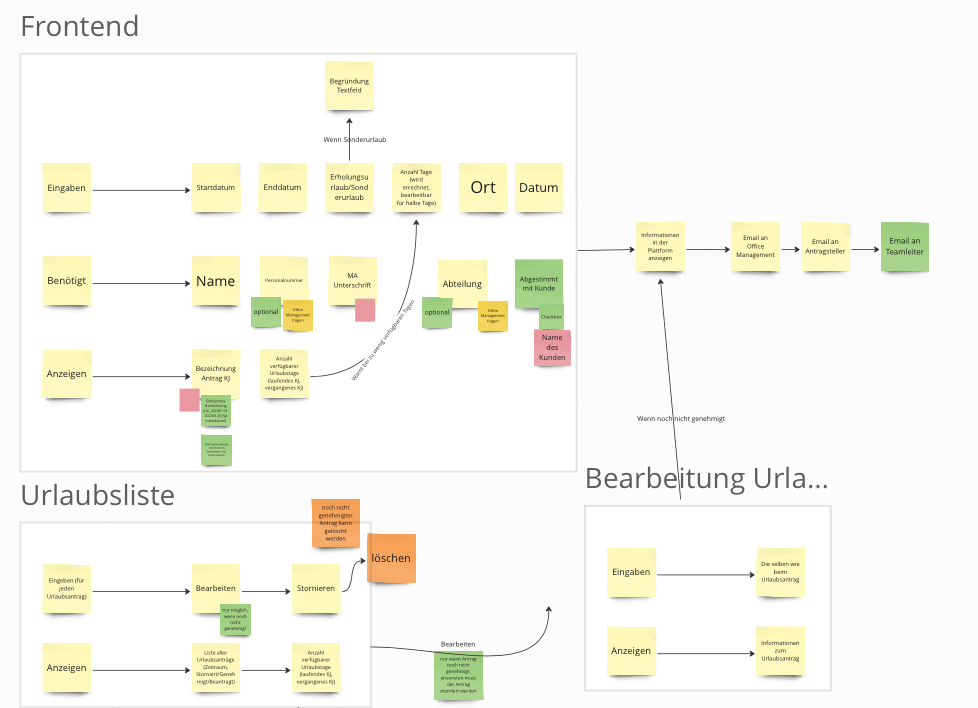
How the Energy Market Reacts to a Changed Environment
How the energy market reacts to a changed environment

Henning Schneider
Friday, February 24, 2017
An analysis of how the energy market reacts to a changed environment
Analysis of The Reaction of The Electricity Market to Changed Framework Conditions
After the presentation of the The Energy Market Model, the following article belongs to the series of Mastering The Complexity of Energy Markets and analyses the reactions of the electricity market to changing framework conditions with the help of scenarios. In reality, the electricity market is also subject to constant change. The framework conditions are changed on the one hand by regulatory interventions (e.g. in the shorter intervals for the amendments of the EEG) and on the other hand by technical progress (e.g. the widespread use of smart meters). The effects of a higher intensity of competition, through new players on the electricity market, will be considered in more detail in a later paper in the context of business models.
For a structured analysis of the electricity market reactions, the most important factors of the electricity market are first identified, categorized and based on this, scenarios for different framework conditions are defined (inspired by Shell Scenarios).
The factors can be classified into 3 groups:
- Unimportant factors These factors have little effect on other elements of the model and therefore do not need to be analyzed in detail.
- Predetermined factors These factors have a large impact on other elements of the model but their later expression can be predicted well.
- Key factors Key factors have both a large impact on other elements of the model but at the same time are characterized by a high degree of uncertainty regarding their future expression.

An analysis of all six factors is beyond the scope of this paper, so the paper focuses on two factors. These will also be used later to illustrate scenario planning:
- Costs of conventional energy - Key factor
- The target for the share of renewable energy - Predetermined factor
The costs of conventional power plant capacities have a direct influence on the margins that can be achieved but are also characterized by a high degree of uncertainty, as some of the costs are difficult to forecast. For example, fuel costs for conventional power plants are largely determined by the market (traded on the stock exchange) and are therefore subject to volatility that is difficult to forecast.
The political target for the share of renewable energy and the associated government subsidies are an important component of the achievable margins for renewable energies, at least on the German electricity market. However, the target is also a predetermined factor. For example, the 2050 energy target sets targets for the share of renewable energy for the future. Later analysis will show that scenario planning is also informative for predetermined factors. This is especially true for the international comparison of electricity markets and the analysis of different support regimes, which are significantly dependent on the target.
Basic Scenario
Before the analysis is carried out with the help of scenarios, it makes sense to present and graphically explain the presented relationships of the causal loop diagram within the framework of the basic scenario.

The upper diagram shows the supply and demand curves for the base scenario. The two curves are relatively stable and illustrate the balance between supply and demand. The low volatility is caused by the fluctuating electricity production of renewable generation capacities, as this is supply-dependent. This means that the real production of renewable generation capacity is dependent on the supply of wind and solar. For example, a wind turbine in Germany has an annual utilization rate of only about 20%, a photovoltaic system of only about 15%.
In reality, control energy must be used for the times when supply and demand are not balanced. For example, at the beginning of the simulation, the supply (electricity feed-in) exceeds the demand (electricity withdrawal), so there is a power surplus in the grid. In this case, the grid operator requires negative control energy, which withdraws power from the grid for a short time in order to bring the grid back into balance.
The next diagram shows the market capacities of each type of generation over time. It is noticeable that conventional capacities are reduced overall and renewable capacities are built up. The ratio between renewable and conventional energy thus shifts in favor of renewable energy.

As already mentioned, the achievable margins of the individual forms of generation are decisive for the build-up and reduction of capacities. A more detailed analysis of the achievable margins is therefore important. The next diagram shows the margins for renewable and conventional energy and also shows the electricity price on the simulated electricity market.

As expected, the achievable margins differ according to the type of power generation. While positive margins are achieved with renewable energies in the entire simulation period, the margins for conventional power generation are only positive at high electricity prices. Here one can see the reasons for the decreasing conventional capacity and the increasing renewable capacity of the baseline scenario.
The higher margin for renewables results from the government subsidy derived in the model by the gap between the real share of renewable energy and the policy target. The subsidy is therefore another source of revenue in addition to the achievable electricity price (exchange price) and leads to positive margins. In the simulation period, the share of renewable energy increases steadily and reflects the political target of the simulation (20% real electricity production from renewable energy).
Analysis of The Scenarios
The findings from the base scenario will be used in the following to analyze the reactions of the electricity market to changing framework conditions. For this purpose, scenarios are used in which the two factors presented (cost of conventional energy and political target) are varied. Subsequently, the resulting results for electricity prices, market capacities and the supply/demand ratio are explained in more detail.
Four scenarios can be formed from the two factors examined. The scenarios are not only used to explain the interrelationships in the energy market but are also used for the subsequent analysis of future business models. Business models that work under different scenarios or are robust against changing conditions should be implemented preferentially and reduce the risk of bad investments and decisions.
The 4 scenarios have the following characteristics:

- Expensive Energy The high cost of conventional generation capacity and low state target for the share of renewable energy
- Conventional Energy Low cost of conventional generation capacity and low state target for renewable energy share
- Renewable Energy High costs for conventional generation capacity and a high state target for the share of renewable energy
- Cheap Energy Low cost of conventional generation capacity and high state target for renewable energy share

Comparison of The Renewable And Conventional Energy Scenarios
For the comparison of the two scenarios Renewable and Conventional Energy, the diagrams for the achievable margins and the resulting electricity prices are analyzed below.

In the Renewable Energy scenario, the achievable margins for renewable energy are in positive territory throughout the simulation period. The margins for conventional energy are negative due to the low electricity prices in the period. Conventional capacities should therefore be reduced, while renewable capacities should be built.

For the Conventional Energy scenario, margins for conventional energy are higher than for renewable energy. Positive margins are achieved at higher prices. The reduction in achievable margins at the beginning of the simulation can be explained on the one hand by a reduction in government support (low target) for renewable and on the other hand by the initially falling prices.
Comparison of The Cheap And Expensive Energy Scenarios
For the Cheap and Expensive Energy scenarios, a closer look at market capacities and the relationship between supply and demand is significant.

In the Cheap Energy scenario, market capacities tend to increase. Due to low electricity prices and the absence of government subsidies for conventional energy, conventional market capacities do not increase further.

In the Expensive Energy scenario, one can observe decreasing market capacities. Only at the end of the simulation do the market capacities for renewable energy increase again. The conventional market capacities are at a low level. Due to must-run capacities, conventional capacities do not decrease further. These are necessary to ensure system services for the secure operation of the power grid (for voltage and frequency maintenance or the provision of reactive power).

The Cheap Energy scenario is characterized by overcapacity. Supply exceeds demand throughout the simulation period. The price of electricity on the energy market falls.

The diagram shows that in the Expensive Energy scenario both supply and demand decrease. For a long period of time, supply exceeds demand, causing prices to rise. At the end of the simulation, the simulated energy market has found a new equilibrium.
Summary of Findings From The Energy Market Model:
- As expected, the factors studied (conventional energy costs and government targeting) have a major impact on the electricity market
- Higher prices stimulate capacity additions via positive margins
- If supply and demand on the electricity market are in balance, electricity prices are also stable
- The achievable margins are the decisive driving force for electricity producers
- In order to prevent market failures (oversupply, insufficient addition of renewables), government support must be continuously adjusted to current market events (short regulatory cycles are the result)
- The prevailing market conditions and the relationship between market capacities determine the achievable margins and thus the business models
- Own portfolio and especially the ratio between conventional and renewable capacity is crucial for successful business models
- Today and probably also in the future, business models of electricity market players have to work even when electricity prices are low
- Conventional energy sources are needed in the long term for stability in the electricity market (electricity production from renewables depends on the supply of wind and solar, must-run capacities)
- A higher share of renewables in the generation mix tends to lower electricity prices (merit order effect)
Services
Workshops
Resources
All Rights Reserved.





